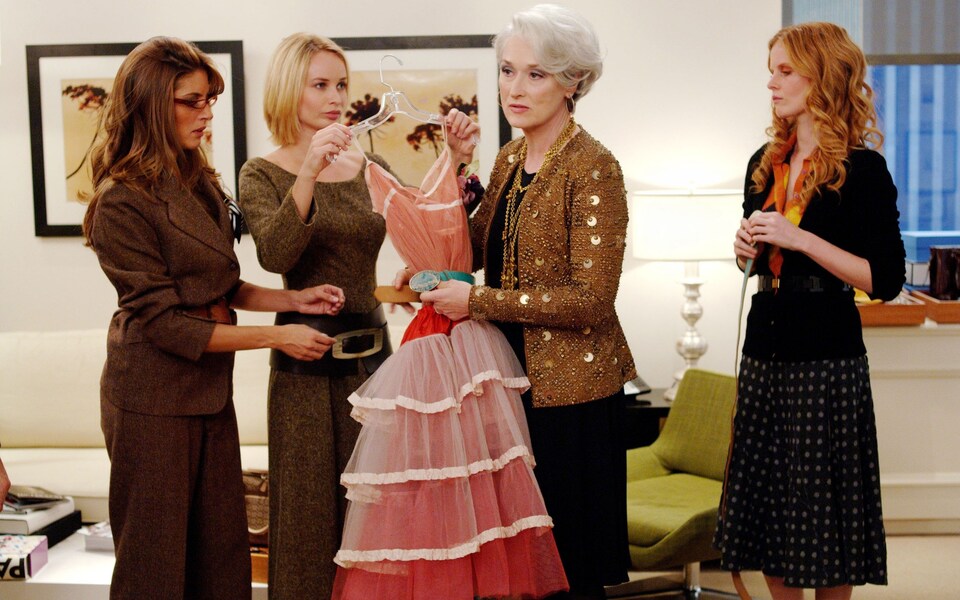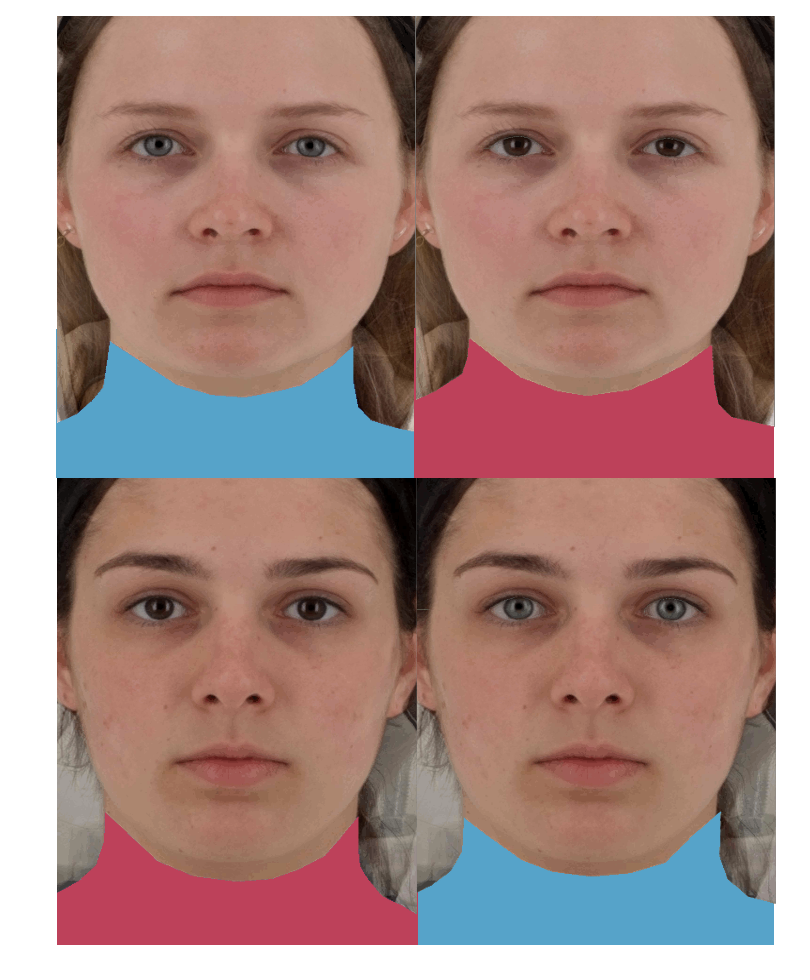The eyes have it

“You are what you wear” is actually true, according to new research led by the University of St Andrews.
Led by researchers from the School of Psychology and Neuroscience, the new study reveals, for the first time, scientifically, that a person’s eye colour determines the colour of clothing that suits them.
Published in the journal Psychology of Aesthetics, Creativity, and the Arts (Monday 23 October) the study reveals strong preferences that favoured ‘cool’ blue hues in fabric match grey or blue eyes and ‘warm’ orange/red fabric hues to match dark brown eyes.
Lead researcher Professor David Perrett, from the School of Psychology and Neuroscience, said: “We invited 200 participants to provide their opinions on what clothing colours suited different faces. We were very surprised at how much agreement there was; participants chose similar clothing colours favouring reds and blues, however the colours chosen depended on who was wearing the garment.
“Everyone wants to look their best, but what should guide the choice and colour of our clothing? Previously, our work indicated the importance of a person’s complexion for clothing colour choice, but we did not define the critical aspect of complexion. Those with a darker complexion tend to have darker pigmentation in their hair, their eyes, and their skin. Any one of these features could be the basis of clothing colour choice. We thought that skin tone would be the critical feature as this is stressed in virtually all stylist advice. Surprisingly skin colour turned out to be unimportant.”

The team of researchers asked participants to undertake two experiments to test the relative importance of skin, eye, and hair colour for clothing colour choice. One experiment used images of White women photographed under standard lighting: half had light-coloured skin, hair and eyes, and half had darker skin, hair, and eyes. These images were also transformed so that the skin tone of the naturally fair faces was altered to give them a tan and the skin colour of the naturally darker faces was lightened.
One hundred participants adjusted the colour of clothing for the face images with and without transformed skin colour. The participants chose from a whole spectrum of colours that could be adjusted in brightness or in saturation (vividness). Despite the marked changes in skin tone, colour preferences for clothing stayed the same. Reds were chosen for the originally dark faces even when their skin was lightened. Blues were chosen for the originally light faces even when their skin was darkened. The results pointing to the critical role of eye colour or hair colour which had not been altered.
The second study confirmed the importance of eyes in selecting clothing colours. This study compared a set of natural face images with light eyes and a set with dark eyes. Further images were constructed with the eyes transplanted between the two sets. One hundred new participants chose blues more frequently for those images with light eyes (natural or transplanted) and orange/reds for images with dark eyes (natural or transplanted).
Overall, the results revealed a dominant role of eye colour with warmer, more saturated, and darker clothing colours being chosen for faces with darker eyes (see figure 1). Reciprocally cooler, less saturated, lighter clothing colours were chosen for faces with lighter eyes. Hair and skin colour had little influence.
Clothing is important to self-esteem and as such helping people look their best is important. The global fashion industry is worth trillions of dollars each year, with colour a major factor in most people’s choice of garments. There is extensive stylist advice on what colours to wear. The advice is based according to personal categories that depend on skin, hair, and eye colour but categories are not defined scientifically, advice is not based on evidence and is inconsistent across different stylists. Furthermore, the allocation of people to categories is based mainly on skin tone.
Professor Perrett added: “Our findings indicate that the emphasis on skin colour for personal clothing colour choice is misplaced. Skin tone may be important at a distance, such as for modelling on a catwalk, but for intimate encounters, such as lunch or an in-person interview, it’s the eyes that matter.”
There has been very little scientific evaluation of the aesthetics of clothing colour. The research team measured skin tone and eye colour objectively and showed that for White women, light-coloured eyes were consistently matched to different colours compared to dark eyes.
Future studies will attempt to introduce more realism in the garment depiction and will explore colour choice for men and women from diverse ethnic backgrounds.
Issued by the University of St Andrews Communications Office.
The paper Eye Colour is More Important than Skin Colour for Clothing Colour Aesthetics by Professor David Perrett published in the journal Psychology of Aesthetics, Creativity, and the Arts.
Please include the paper’s DOI link https://doi.org/10.1037/aca0000626 in all online stories and social media posts, and credit The Journal of Psychology of Aesthetics, Creativity, and the Arts as the source.